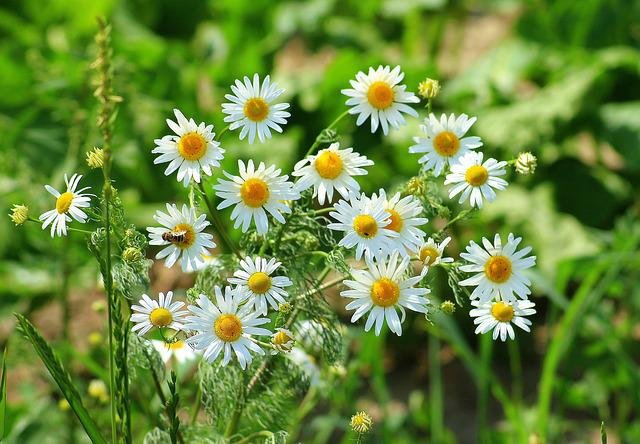
The mother tincture of Chamomile is extracted from Matricaria chamomilla, a plant of the Compositae family. Known for its anti-inflammatory and immunostimulating action, it is useful against nervousness and migraines. Let’s find out better.
Properties of chamomile mother tincture
Chamomile is an annual herbaceous plant very widespread in Europe and Asia and is also naturalized in other continents; belongs to the Compositae family, genus Matricaria; its flowering goes from May to September and it can be found almost everywhere.
It grows spontaneously in the meadows and in the open countryside, no more than 800 m, it often becomes invasive, behaving as a weed of agricultural crops. It is a rustic species that also adapts to poor and acid soils.
Chamomile has good anti-inflammatory properties, thanks to the protective action on the mucous membranes exerted by the mucilages and by the components of its essential oil (azulene and alpha-bisabolol). For this reason it is used as a soothing, decongestant, softening and calming remedy, in all types of irritation of the external and internal tissues: dermatitis, wounds, ulcers, gastritis, conjunctivitis, rhinitis, irritation of the oral cavity, gingivitis and urogenital inflammation.
The plant is also used successfully as a pain reliever in case of toothache, sciatica, headache, back and neck pain. This is thanks to organic acids (salicylic acid, oleic acid, stearic acid) and lactones, which give it anti-inflammatory virtues similar to those of cortisone.
Description of the plant
Aromatic plant with bushy habit, it generally does not exceed 50 cm in spontaneous forms, while in cultivated varieties it can reach 80 cm. It has several stems starting from the base, more or less branched in the upper portion and a tap root.
The leaves are alternate and sessile, oblong, with lamina is bipennatosetta or tripennatosetta, with very narrow linear laciniae. The flowers are gathered in flower heads with conical and hollow receptacle.
The external ones have a white ligule, the internal ones are tubular with a yellow corolla. The flower heads with a diameter of 1–2 cm, are gathered in corymbose tops. The fruit is an achene about 1 mm long, light in color, devoid of pappus.
Preparation
Chamomile tincture is obtained by letting the whole flower cold macerate in pure alcohol. The flavor is slightly acrid and aromatic.
Usage
It is used to treat inflammatory states; for example, to treat swollen and bleeding gums, victims of gingivitis, just dip a cotton swab in the mother tincture and gently pass it on the inflamed part; also useful for eczema, eye inflammation, vaginitis.
A few drops are used to treat headaches, states of irritability, nervousness or intolerance to pain, neuralgia, insomnia, gastrointestinal pain or colic, gastric disorders, irritable bowel or bloating. Furthermore, chamomile is among the immunostimulating plants, prevents infections and stimulates the body to react against various diseases.
The generally recommended dosage ranges from 30 to 60 drops twice a day before meals, but it is good to consult your herbalist or trusted doctor before taking.
Prolonged use is not recommended as it can cause nausea and insomnia; it is contraindicated in pregnancy, as it stimulates contractions of the uterus.






